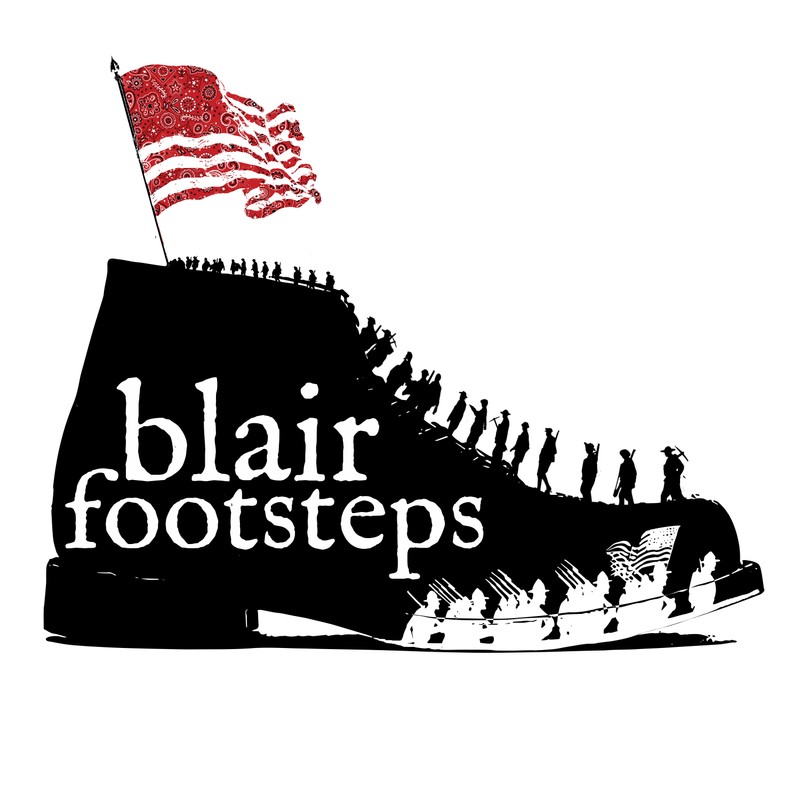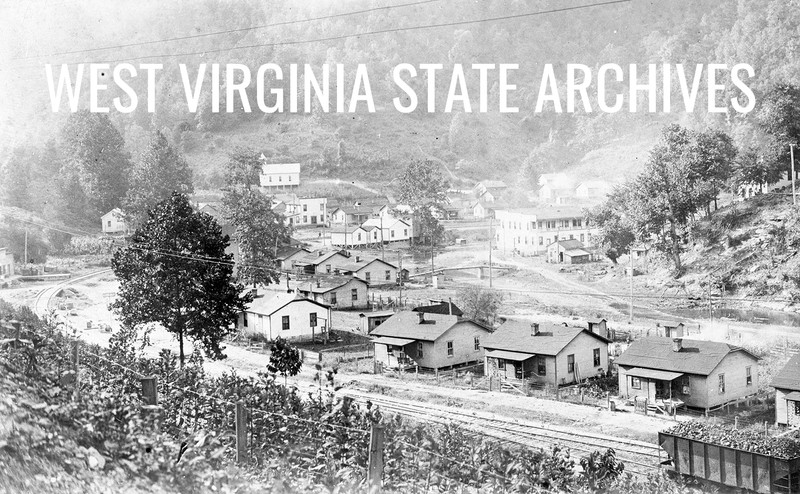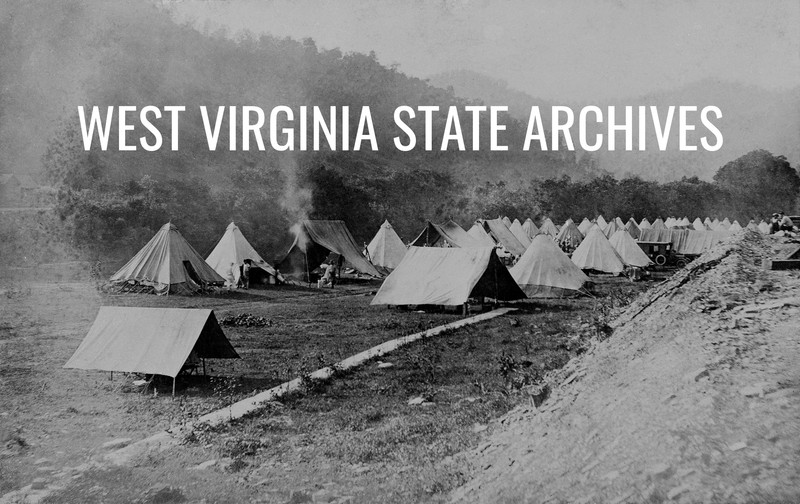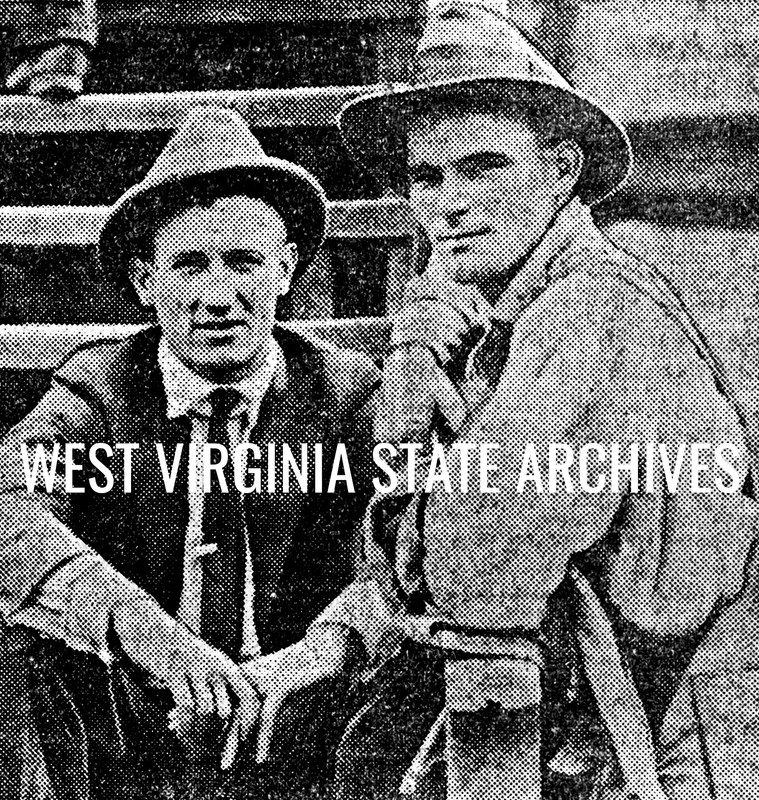Blair Footsteps Tour #5: Blair
Introduction
Text-to-speech Audio
As August 1921 came to a close, over two decades of labor unrest in the West Virginia coal fields culminated in a showdown near the small town of Blair. A battle with an estimated 8,000-20,000 combatants raged for three days in the mountains and gullies around Blair Mountain, as pro-union forces attempted a pincer movement to flank the long line of entrenchments held by the "Logan Defenders" along fifteen miles of Spruce Fork Ridge and Blair Mountain's twin peaks. The town of Blair itself served as a forward command post and supply depot for miners attacking the slopes of Blair Mountain.
--------------
This entry is a digital companion to the Blair Footsteps exhibit trail, available to the public from August 30 - September 11, 2021 as part of the Battle of Blair Mountain Centennial. The map location of this entry indicates where the temporary exhibit can be found. The Blair Station of Blair Footsteps is located next the Blair Post Office, just off of WV Highway 17 near the center of the town of Blair.
Images

The town of Blair as it appeared around the time of the 1921 battle.

A U.S. Army camp set up in the vicinity of Blair after the battle. Some units remained in the area for several weeks to ensure fighting did not flare up again.

Bill Blizzard (left) was one of the miners' field commanders during the battle, and he established a forward command post in the town of Blair.

Backstory and Context
Text-to-speech Audio
In the waning days of August 1921, the "Red Neck Army" advancing on the northern border of Logan County remained steadfast in its determination to break through to Mingo County and overturn a draconian state of martial law enforced there by Major Thomas B. Davis; free their comrades who had been imprisoned without trial in Mingo's county seat of Williamson; and spread the union's efforts to West Virginia's southern border.
Logan County Sheriff Don Chafin had no intention of letting any of that happen. Chafin had made a fortune from his reputation as a union-buster by illegally employing hundreds of "deputies" as private mine guards and violently ejecting union organizers from his "kingdom." His men—a mix of volunteers, National Guard, and State Police—were well entrenched on the high ground, ready to repel the miners if they moved across the Boone-Logan county line. As the steady flow of armed miners increased into the Spruce Fork Valley between Jeffrey and Blair, the area became the Red Neck Army's bridgehead for the assault on Chafin's positions. The stage was set for battle.
The overture to open conflict began on the night of Tuesday, August 30 when two units dispatched by UMWA Subdistrict 2 President Bill Blizzard climbed the eastern slope of Blair Mountain and camped for the evening on the ridge. At dawn a small scouting party led by Reverend John Wilburn patrolled the misty mountaintop to search for the enemy. When they found them, Wilburn's miners opened fire and three Logan County deputies were killed—including longtime Chafin henchman John Gore—and one union miner was mortally wounded. As Wilburn's men carried their injured comrade down the mountain, they heard the faint buzz of Chafin's airplanes on their way to drop leaflets on the encampments along the Spruce Fork and the Little Coal River. The leaflets bore a proclamation from U.S. President Warren G. Harding, demanding that the miners disband and return home by noon on September 1, or face the consequences.
The miners in the field had few means of verifying the message's authenticity and made no moves to disperse. Later that afternoon, a column of miners thrust westward out of Blair and another sallied forth from Jeffrey up Hewett Creek, plunging up the slopes into fire from small arms and machine gun nests along the ridgeline. On Hewett Creek, miner Bert Castle's men were sprayed with machine gun fire, killing two young volunteers. Shortly after, Ed Reynolds's Kanawha County miners attacked a Logan machine gun emplacement. When the Logan gun jammed, it bought Reynolds time to bring up his own automatic weapon. Chafin's deputies and State Police pulled back for fear of being overrun. Through the afternoon the thunderous crackle of gunfire rang from the mountains, frightening the inhabitants of Blair.
As September 1 dawned, the Red Neck Army's two offensive thrusts struggled forward, feeling for the extreme flanks of the defenders' line so as to turn them and get in the enemy's rear. Chafin had dispatched reinforcements into the mountains upon learning of breaks in his defensive lines the day before, but he also had another weapon in his arsenal. The men fighting on the northern front now paused briefly in the heat of the day to take note of a familiar noise—the buzzing of airplanes overhead. This time, however, the munitions carried in Chafin's weren't harmless leaflets, but gas and pipe bombs. The crude aerial assault missed its targets, but the planes continued to serve as eyes in the sky for the besieged Logan fighters.
Word spread to Charleston of the open warfare in Logan County. Brigadier General Henry H. Bandholtz, returning from Washington D.C. as the violence escalated, tried once again to persuade the miners to go home. It was too little and too late, and Bandholtz reported to Washington that federal intervention was necessary. On September 2, Harding's administration ordered the largest domestic military deployment in over forty years. 2,100 U.S. troops were soon on their way to West Virginia to put a stop to the battle.
Fighting raged into the afternoon on Blair Mountain and at Crooked Creek Gap as miners pushed up the slopes again and again. But by the afternoon of September 3, the chatter of gunfire slowly quieted as word spread of the U.S. Army's imminent arrival and contingents of "Uncle Sam's" troops moved onto the battleground to begin disarming the recalcitrant miners. But the Red Neck Army gave them no trouble. Not a shot was fired against the federal troops, as the miners saw their presence as confirmation that their plea for justice had at least been heard in the nation's capital.
---------------------------
In late August and early September 2021, a small team of volunteers from the Preservation Alliance of West Virginia will install Blair Footsteps, a temporary outdoor exhibit trail which guides visitors through some of the important sites and events along the route of the miners’ march. The exhibit is funded in part by a grant from the National Coal Heritage Area Authority, and is an official event of the Battle of Blair Mountain Centennial.
Sources
Green, James. The Devil Is Here in These Hills. Edition First. New York, New York. Atlantic Monthly Press, 2015.
Lee, Howard B.. Bloodletting in Appalachia: The Story of West Virginia's Four Major Mine Wars And Other Thrilling Incidents On Its Coal Fields. Parsons, West Virginia. McClain Printing Company, 1969.
Savage, Lon. Thunder in the Mountains: The West Virginia Mine War, 1920-1921. Pittsburgh, Pennsylvania . University of Pittsburgh Press, 1990.
Shogan, Robert. The Battle of Blair Mountain: The Story of America's Largest Labor Uprising. Boulder, Colorado. Westview Press, 2004.
West Virginia State Archives
West Virginia State Archives
